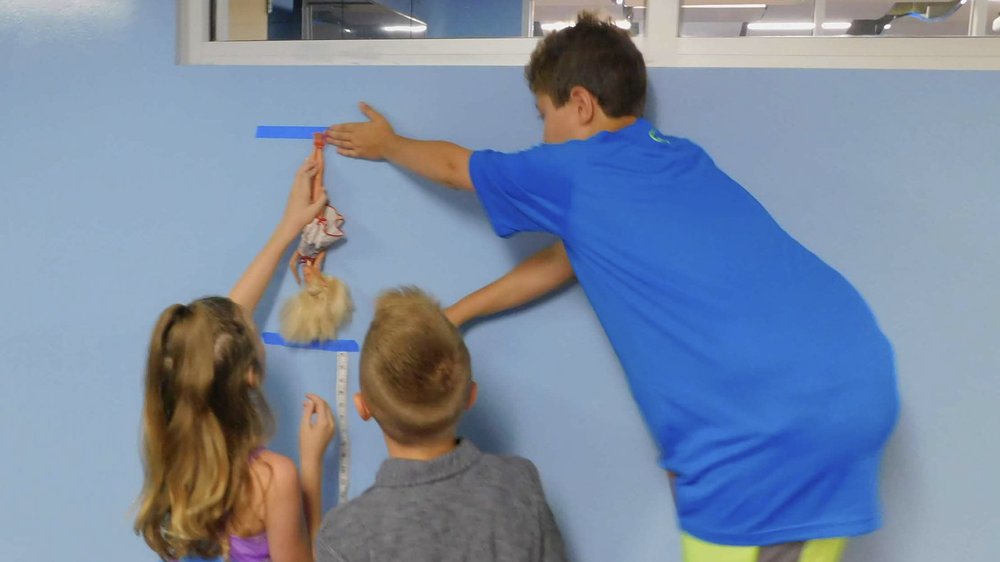If you caught my previous post, you know this is your place to grab free original math projects you can use with your elementary students. All these projects rank extremely high on our Fun Meter and are guaranteed to rank high in the Sneaky Math Learning Index (SML) as well.
Last month’s post, Candy Calculations, was a lot of fun and brought some very sweet reviews our way. As a friend of mine once told me, ‘To learn math, you have to do math.’ It’s been almost 10 years since he told me that little bit of wisdom, and I’ve yet to prove him wrong.
So how did your students enjoy their candy projects? Any emerging architects from our Sugar Cube Cities? Future cybersecurity experts with our Jellybean Code Breaker project? Or budding engineers with our Licorice Strength Analysis? These fun math projects are the kind of exercises that can stay with a student and get them thinking about practical aspects for mathematics in their own lives.
One of the beautiful things about our projects is they give your students the ability to try and fail and try again. In essence, learners get to run the whole gamut of the learning process. Like many of my colleagues, I have begun to feel wary of the way we have pre-packaged mathematics in an almost fast-food style… step up to the counter, folks, and pick the right answer. In a time-condensed fashion, we have systematically removed the ability to fail from the mathematics learning process. That ability to fail is part and parcel to the learning process, the struggle to gain knowledge, to fight for the answer and have the feeling of triumph and the corresponding release of endorphins to seal the process into memory.
In this month’s post, we’ll share some of our favorite math projects that use toys.
Bungee Barbie
Although Mattel’s iconic doll is known for her glamorous fashion sense, she has a wild side as well! In this project, we originally sought help from our local fire department. They brought over their fire truck, extended the ladder, and Barbie took a bungee jump from the top of the ladder. For your class, you can use any fixed point – a spot on the ceiling of the classroom, the top of a stairwell, or even a sturdy tree branch.
Students will use rubber bands to simulate the bungee cord, and then figure the number of rubber bands it takes to safely land Barbie to within two inches of the floor or ground. You’ll need a tape measure, rubber bands of course, and at least one daredevil doll.
Want to be really adventurous? Call your local fire station!
Click here to go bungee jumping with Barbee.
K’Nex Measurement
Why are all our standard measurements in inches, feet, yards or miles – or using the metric system, in millimeters, centimeters, meters or kilometers? What if there was a more personal measuring system? What if you were the standard, and everything was measured in you’s?
Be careful what you wish for. In our K’Nex Measurement project, we’ll use your students as the basic form of standard measurement, and everything will be measured in Marys (or Todds or Jimmys).
Students will use K’Nex pieces to measure their height, then use the new measurement system to figure the size of objects in the classroom or school. You can even use stickers to divide the measurement into halves, quarters and eighths for greater accuracy.
They can even get creative (a quarter Curt, a half a Becca) How many Becca’s would it take to go from end to end in your state?
Click here to measure your world in you’s.
POG Baseball: Statistics and Analysis
For more than a century, baseball has been a wonderful opportunity to practice statistics and analysis. In the classroom using POGs and Slammers, the statistical opportunities not only come fast and furious, they take on a fun life of their own.
In this version of POG Baseball, each game is set up with two innings and three outs per inning. Other rules are easy to follow, and students find the game extremely exciting, competitive, and one of the most fun activities they get to participate in all year long.
Swing here to play POG Baseball.
With these Teaching with Toys projects, your students will have so much fun, they’ll forget all about how much math they are learning. Each project is practical and relatable, and the skills are transferable. The math they learn here will stay with them for a very long time, and the lessons are so much fun, they’ll beg you to play some more. It’s math with a purpose. And you’ll love it just as much as your students do.
About the author
Howie Templer is the Chief Project Designer at 10storymath, a Chicago-based firm that develops project-based math supplements for elementary schools. He taught elementary school in the Chicago area for 12 years, developing expertise in integrating project-based learning experiences into core academic curricula. He is a recipient of the Golden Apple Award and was a 2018 finalist for the Presidential Award for Excellence in Math & Science Teaching.










